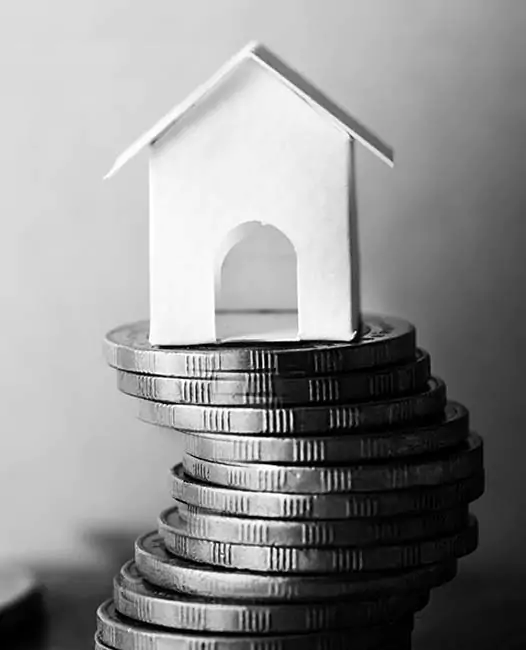
We seek value-added projects that produce outsized returns but with a reduced risk profile.
We leverage data and practical real-world experience to help you obtain dependable passive income investing in tax-advantaged commercial real estate.
The performance of individual assets is dependent upon the skills of the management team. Identifying and acquiring the asset is less than 10% of the job; managing the asset is what truly determines the performance of your investment.

We employ strict standards to identify high-quality properties with significant upside and a favorable risk to reward profile. Using a data-driven, research-focused process, we uncover the best metros, sub-markets, neighborhoods and specific target properties.
We have strict property selection criteria:
Rent Growth Track Record
We ensure that the property’s submarket has a strong 12-month rent growth track record.
Untapped Potential
Problem areas such as low-performing staff, ineffective marketing, and poor curb appeal can be fixed quickly.
Only a small percentage of properties we underwrite meet our strict buying criteria. A property must have massive value-add potential for us to move forward with an offer.
Local Growth Drivers
We seek properties in areas experiencing local job growth drivers, such as increasing corporate relocations or landmark construction. We look for properties in neighborhoods that are in the path of progress.
Trust but verify
During due diligence, we verify and tie back the information provided by the selling team to the actual bank statements and tax records. We analyze the leases to identify loss-to-lease opportunities and potential rental instability. We often obtain independent market analysis to cross-validate our market intelligence.
Stress test
We stress test our market, demographic, and deal assumptions. Stress testing our investments permits enhanced returns, but with reduced risk.
Leverage is the key to improving rates of return. We use a combination of debt and equity funding to achieve an appropriate leverage balance and risk-minimization strategy.
Leveraging the collective experience and intelligence of the team in a larger project provides far greater risk reduction than individually acquiring and managing an asset, and it also allows retention of professional maintenance and management.
The Limited Partners are additionally protected from risk by the legal structure of the Corporation, and yet still gain the benefits of the General Partners’ work.
With effective management and enhancement of the property, we are able to improve occupancy rates and increase rent rates, resulting in increased property values and higher cash flow for our investors.
We constantly search for value-add opportunities in each property.
Our team excels in maximizing the cashflow of each individual property, which drives the net operating income and ultimately the realized sale value of the property.
We strive to divest the property and return capital and profits to investors in a 4-10 year time period. We take pride in communicating frequently with our investors and provide updates on progress toward reaching the stated exit price for the property.
Using sophisticated data mining, we monitor the investment and the market, with a goal of maximizing IRR (Internal Rate of Return) and improving the investors’ Velocity of Capital.
Each project has a pre-defined exit strategy and timeline; for example, opportunity zone projects may require 10 years to realize maximum return.
A syndication is typically a partnership between general partners (i.e., the syndicator) and the limited partners (i.e., the investors) to acquire, manage and sell a specific real estate entity, while sharing in the profits. The syndicator should demonstrate an alignment of interests with the limited partner. The ongoing asset management fee should be in second position to the preferred return, which promotes alignment of interests. If you don’t get paid, the syndicator doesn’t get paid.
The syndicator should be investing their own capital in the deal as well, whether that is their personal funds, company funds, or by allocating a portion or all of their acquisition fee into the deal. By not having money in the deal, the syndicator isn’t exposed to the same level of risks as you are. If the deal performs poorly, they won’t get paid, but they also won’t lose any capital either. If they have their own skin in the game, they are incentivized to maximize returns.
The syndicator, or a member of the management team, should personally guarantee the loan as a loan guarantor.
The management team should include an experienced property management company, an experienced syndication consultant or local owner who is active in the commercial real estate industry, and an experienced real estate broker. They don’t need to be the key principles but should be identified in the business plan.
You are trusting the syndicator with your capital, so transparency regarding what they are doing with your money and how the deal is progressing is non-negotiable. Ask about their ongoing communication process. How often do they send updates on the deal? Will they provide you with financial reports so you can review the property’s operations? Ask them what the communication process is when you have a question. Will they provide you with their cell phone number or direct email address? What will be the turnaround time?
Once the deal is closed, the general partner (GP) should send consistent updates on the status of the deal — typically once a month or quarterly.
Reports should include occupancy rates, updates on the number of renovated units, details on our rental premiums and how they compare to our projections, capital expenditure updates, relevant updates on the market, and resident events. Overall, you want to know the status of the business plan and how the rents compare to the projections.